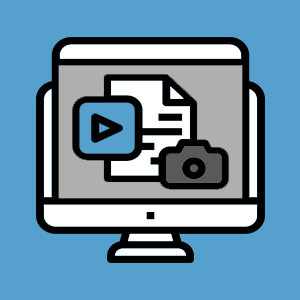 In the intricate landscape of B2B marketing, the creation and promotion of assets play a pivotal role in driving targeted traffic and generating quality leads. To navigate this landscape successfully, it’s essential to delve into the specific best practices, pros, and cons associated with promoting whitepapers, ebooks, and webinars.
In the intricate landscape of B2B marketing, the creation and promotion of assets play a pivotal role in driving targeted traffic and generating quality leads. To navigate this landscape successfully, it’s essential to delve into the specific best practices, pros, and cons associated with promoting whitepapers, ebooks, and webinars.
Whitepapers: In-Depth Insights for Industry Authority
Best Practices:
- Targeted Distribution: Whitepapers thrive when strategically placed where your B2B audience actively engages. Explore industry forums, LinkedIn groups, and professional associations to share your whitepapers directly with decision-makers.
- Email Campaigns: Utilize targeted email campaigns to reach your existing subscriber base. Craft compelling subject lines that emphasize the value of your whitepapers to encourage opens and downloads.
- Collaborate with Influencers: Partnering with industry influencers or thought leaders can significantly amplify the reach of your whitepapers. Their endorsement adds credibility, expanding the visibility of your content.
Pros:
- Establishes Authority: Whitepapers, renowned for their in-depth analysis, position your company as an authoritative source within your industry.
- Lead Generation: Gating whitepapers behind a form allows you to capture valuable lead information, providing a pool of potential clients genuinely interested in your content.
- Long-Term Value: Unlike more ephemeral content, well-researched whitepapers have a longer shelf life, continuing to attract leads over an extended period.
Cons:
- Time-Intensive: Creating high-quality whitepapers can be time-consuming, requiring extensive research and analysis.
- Requires Optimal Promotion: Without effective promotion, whitepapers may not reach their intended audience, limiting their impact.
Ebooks: Versatility in Visual Storytelling
Best Practices:
- Visual Appeal: Design visually engaging ebooks that blend text, graphics, and interactive elements. The visually appealing format can capture and retain the attention of your audience.
- Social Media Campaigns: Leverage the visual nature of ebooks on platforms like LinkedIn and Twitter. Create teaser graphics or short animations to promote key insights, encouraging clicks and downloads.
- Collaborative Launch: Collaborate with complementary businesses or influencers to co-launch your ebook. This cross-promotion expands your reach and introduces your content to new audiences.
Pros:
- Versatile Format: Ebooks allow for a creative and versatile presentation of information, making complex topics more digestible.
- Shareability: The visually appealing nature of ebooks makes them highly shareable on social media, increasing their potential virality.
- Lead Capture: Like whitepapers, gating ebooks behind a form enables lead capture and helps identify potential customers.
Cons:
- Design Complexity: Creating visually appealing ebooks may require design expertise, potentially adding to production costs.
- Potential for Shallow Engagement: Some readers may skim through ebooks rather than engage deeply with the content, affecting the depth of the connection.
Webinars: Real-Time Engagement for Lasting Impressions
Best Practices:
- Multi-Channel Promotion: Utilize a mix of email marketing, social media, and website promotion to ensure maximum visibility for your webinars.
- Engaging Invitations: Craft compelling and personalized email invitations to encourage registrations. Highlight the value participants will gain and emphasize any expert speakers or panelists.
- Interactive Elements: Incorporate interactive elements during the webinar, such as polls, Q&A sessions, or live discussions. This keeps participants engaged and enhances the overall experience.
Pros:
- Real-Time Interaction: Webinars allow real-time engagement with your audience, fostering a sense of community and immediate connection.
- Demonstration Opportunities: Ideal for showcasing products, services, or complex concepts through live demonstrations.
- Lead Qualification: Engagement during webinars provides insights into participants’ interests, aiding in lead qualification.
Cons
- Resource-Intensive: Hosting webinars requires significant resources, from technology to planning and execution.
- Time Constraints: Participants may find it challenging to commit to a specific time for a live event, potentially limiting attendance.
In conclusion, a comprehensive B2B content marketing strategy involves a nuanced approach to whitepapers, ebooks, and webinars. By understanding the best practices and weighing the pros and cons associated with each format, B2B companies can tailor their strategies to effectively reach and engage their target audience, ultimately driving traffic and generating high-quality leads.
